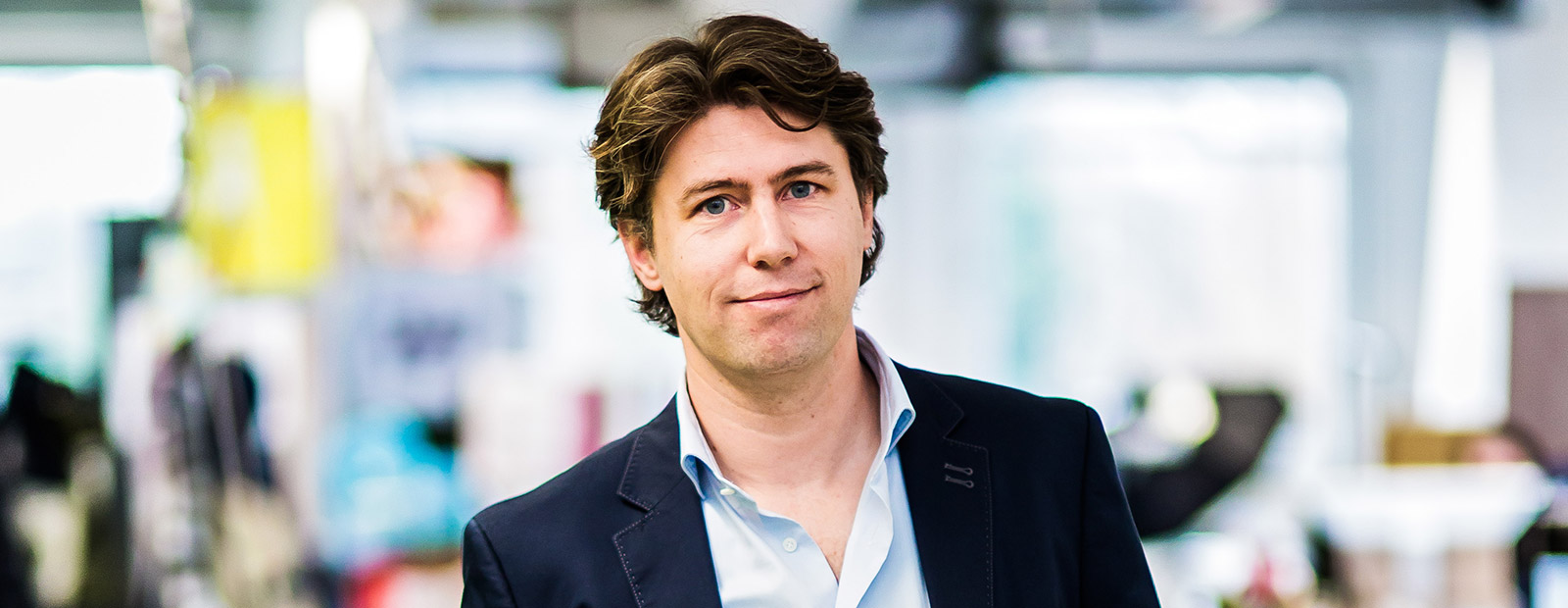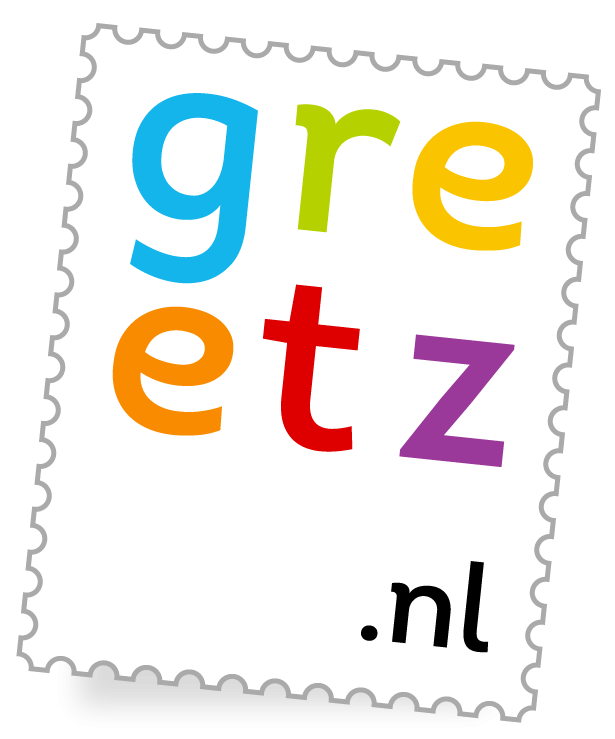
Johan van Vulpen

Where does the Greetz story begin?
“When the Guilder had to make way for the Euro in 2001, my friend Simen Schimmel predicted that the Dutch would want to keep some of their old coins. He thought a more sentimental way to store them than a jar or an old sock would be hugely appreciated by the public, so we created Centiment, a pretty case with a slot for all Dutch coins (cent, stuiver, dubbeltje, kwartje, piek, knaak and vijfje). When we paid fl. 67 to register at the KvK to borrowing over fl. 100 000 together, we had no way of knowing how things would work out, because all of our products that went into the shops could just as easily be sent back to us. We had to wait until February 2002 to see whether they had sold at all. When we heard we’d earned back the investment and the amount was enough to buy ourselves two second-hand cars, we thought: what’s next? Centiment had been a one-product-one-opportunity-company, but we gave ourselves six months to come up with a sustainable business plan.”
How did you choose which direction to take?
“My interests have always been technology, consumer products and brands, and scalability. Over the next two years, we created quite a diverse selection of consumer products, each with a strong branding element. We were testing the water, so we had to work insane hours to try and bring each business plan to fruitition. Scalability became very important when one of the products, Greetz, started taking up more and more time. Regular e-commerce companies often are ordinary box-pushers. We aren’t. We work on product development and production as well as e-commerce. That’s a unique combination, especially at the scale we envisioned.”
What is it like bringing an innovative product to market?
“We really needed to educate the masses about the concept. At first, people would call our customer service because they were spooked about receiving a greeting card with their own face on it. It really helped that we had an established partner like Hallmark.”
How did you find partners like Hallmark?
“They approached us in 2004, just three weeks after we went live. A huge compliment! On the other hand, we didn’t want to become a mere platform provider for third parties – we wanted to build the brand Greetz, so it became a true balancing act between their input and requests, and our own vision. From 2004 to 2008, Greetz focused on optimizing the process and the platform while Hallmark took care of the content. We had to make sure that for the customer, every step replicated the experience of buying, sending and receiving a greeting card - from the shop front to the quirky envelope with the slightly askew stamp. Everything was developed in order to make the customer and the receiver smile. In 2007, we had our first Venture Capital Injection, which we used to buy our own printing facilities and Kaartenhuis, the biggest digital cards company in the Netherlands. At the time, e-cards were big business, but in the following years, we aimed to convert Kaartenhuis users to Greetz. A year later, we dropped all other ventures and decided to fully focus on Greetz.”
How did you know you were at a turning point in 2008?
“The platform was ready for the masses and we crossed the €5 million barrier at the same time. This meant that we had to shift our focus from product optimization to building the brand and the relationship with the consumer, while the growth of the organization required more structure and clear definitions of everyone’s responsibilities. Connecting the dots backwards, it was a great move that we made sure our prototype was perfect before we attracted investors and masses of consumers. Greetz is a retention business, and the first time people use our product determines whether they’ll come back.”
What's your main challenge?
“To find the right balance between big innovation projects and e-commerce optimization. E-commerce means you need to adjust every lever a tiny bit every day. And you need IT expertise for that. But even if you make the machine perform slightly better day after day, that might bring you to the top of the league, but it won’t necessarily bring you victory. Sometimes you need to make leaps and bounds. And striking the right balance between the two is an ongoing challenge.”
Do you have international aspirations?
“When you look at Germany, France or the Nordic markets, you’ll find a lot of people sending greeting cards, but they lack a strong online player like Greetz. Eventually, we will try our hand at introducing our concept abroad, but we’ve decided to stick to the Dutch market for now because our growth here is still keeping us fully occupied. It’s not just that we’d have to build the category, but we’d have to get to know the market, adapt our products to that market, set up a local customer service desk and find the right logistic parties so that we can guarantee next-day delivery. There are numerous small aspects that make Greetz a lot harder to export to foreign markets than a regular e-commerce businesses.”
What does the competition look like in The Netherlands?
“In terms of one-to-one cards, our serious competitors aren’t online parties – we left those behind years ago. It’s the offline greeting card business. Only 10 to 15% of all Dutch greeting cards are sent online. That leaves plenty of room for improvement. Every year, people place around 4 or 5 million orders with us. The challenge is to increase the value of each transaction. The numbers of cards being sent are still growing rapidly, but the amount of Gifts purchased is even more on the up. We are aiming to expand our portfolio of personalized products that connect senders and recipients – and the greeting card won’t necessarily be part of the order anymore. Our strength is the breakneck speed at which we keep implementing innovation.”
What sort of innovation are people really gagging for?
“Two years ago, Greetz first made it to the list of brands that Dutch people wouldn’t want to do without. That was one of the biggest compliments I’ve ever had, because it means that we’re filling a void in people’s lives. For instance, some time ago, we added the option that people can change the color of the envelope. It’s a stretch to call that innovation, but it’s being used an awful lot. We need to keep coming up with new products – and have the heart to reject those that turn out not to be profitable.”
Can you name an example of a product that failed to become a hit?
“We spent seven months developing a product called the ‘personalized gift card’. So for someone’s 27th birthday, you could send them a Bijenkorf card worth 27 euros with a personal picture and text on it. Although the idea and customer reactions were very promising, the conversion rate was disappointing. A lot of customers who initially insisted they wanted to add a gift card to their cart dropped out during the personalization funnel - personalizing two items turned out to be too much. After four months, we decided to kill the trial. It’s harsh for the guys who worked on it, but it’s necessary for the business. Innovation only succeeds when you’re creating something your clients need.”
Technological progress also encourages innovation.
“Yes, a real technological innovation we recently adopted is the option to add a handwritten text to your card using a smartphone or tablet. This is the final step in making our cards look truly personal, rather than something that was created online. We firmly started to focus on the mobile market in 2012, another turning point in our history. This accounts for around 20 percent of our online traffic. When we air a TV campaign, mobile usage shoots up to 30 or even 40 percent. If these visitors don’t convert, it means we’ve wasted our advertising budget and actually harmed consumers’ perception of the brand. We’ve been having to go along with the mobile trend. Prior to it, there had been just one Greetz platform – our website. These days, we have separate platforms for iPad, IPhone, Android, Flash and HTML5 browsers.”
They say that once you become an entrepreneur, there's no way back.
“For me, there is no “back” because I’ve never had a regular job. I don’t know what it’s like. I first started making money when I was 13, at the market place. From that moment onwards, everything I did was performance-based and enterprising. I’ve gathered a lot of people around me who challenge me with their views on e-commerce and running a company: a crew of almost a hundred talented specialists who are better at what they do than I am, a strong management team, shareholders, the Board of Directors… I don’t always agree with the people who challenge me, but I do value their opinions.”
What's it like to have a board of directors?
“We wouldn’t have come as far as we are now without our formal investors. But it means that I can’t just take any decision I see fit. For a maverick entrepreneur like myself, that means having to count to ten sometimes. With backgrounds ranging from selling oil to distributing pens, our investors provide us with a different take on entrepreneurism and building a business.”
What sort of people do you gather around you?
“I prefer intelligence and attitude over seniority and experience. In order to bring change to an organization, people need an extremely high level of energy, so most of us are between the ages of 25 and 35 and have degree. There are a couple of ex-consultants as well - our Operational Director used to work at Accenture and my CFO comes from McKinsey. That was a true eye-opener – you simply can’t overestimate the effect that hiring the sharpest knife in the box will have on your business.”
What's it like working at Greetz?
“Every Tuesday, we have a crew meeting where we share business insights, performance stats and innovations with all of the staff. Everyone knows how the company is doing and what the main challenges are, which promotes ownership. There’s a very strong sense of comradery. For example, when we launched our framed-photo service, we asked everyone to order a picture of themselves, and we put all of those pictures up on a wall. Our slogan is ‘Greetz makes you feel special’, so on the photo wall it says: ‘We make you feel special’.”
What makes you feel special?
“Last year, we created a seasonal product for Valentine’s Day: heart-shaped balloons. We sold 5000 of them. Every balloon was filled with helium and wrapped up in a big box with a ribbon. A pallet holds 16 boxes and a truck contains 25 pallets. It was magical to see 13 massive trucks loaded with nothing but love leaving Greetz the day before Valentine’s Day. They must’ve been the lightest filled up trucks ever!”
2016 – present
COO, NavAds
2014 – present
Founder & CEO, QLIM
2004 – 2014
Co-Founder & CEO, Greetz
2001 – 2008
Founder, Venspro
